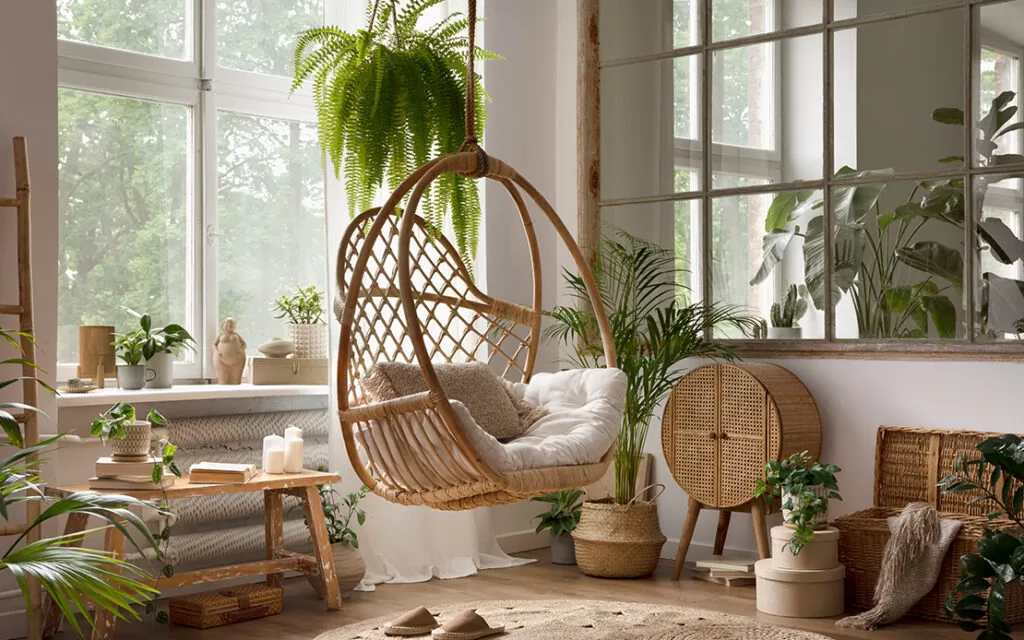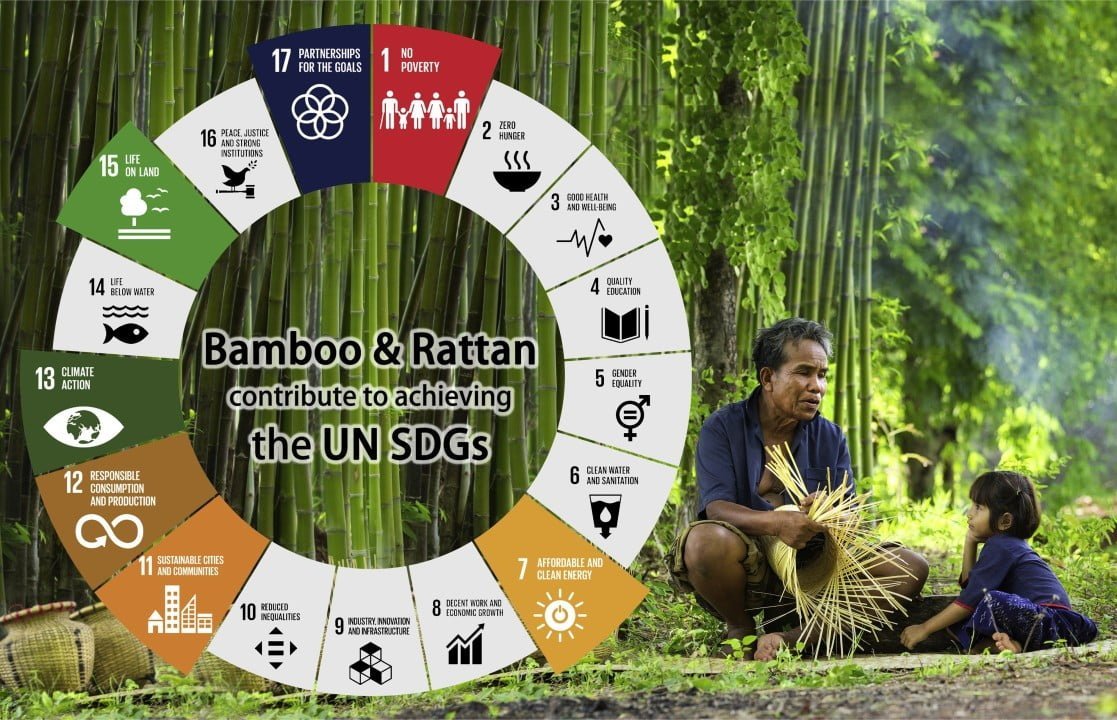Rattan and bamboo hold significant potential in the global market, offering sustainable alternatives for various industries, including furniture, construction, and fashion, driven by growing environmental awareness and demand for eco-friendly products.
Key Market Trends
- Shift Towards Sustainability: Consumers are increasingly conscious of eco-friendly choices, boosting the demand for rattan and bamboo products. These materials are renewable and often have a lower carbon footprint than traditional materials like timber or plastic.
- Asia-Pacific Dominance: This region leads in the production and export of rattan and bamboo. China, India, and Vietnam are significant players.
- Growth in Furniture and Construction: The versatility of these materials makes them popular for furniture (indoor and outdoor), flooring, building structures, and even scaffolding.
- The Rise of E-commerce: Online platforms have opened up new markets for rattan and bamboo products, making them more accessible to global consumers.
- Innovation in Processing and Design: Advances in material processing and product design are expanding the use cases for rattan and bamboo.
Opportunities
- Expanding into Niche Markets: Explore high-end design, sustainable packaging, and specialized applications for rattan and bamboo.
- Developing Value-Added Products: Focus on finished products rather than just raw materials to capture greater value.
- Partnerships and Certifications: Collaborate with designers and organizations that promote sustainable practices to increase brand credibility and market access.
- Targeting Developed Markets: Cater to the growing demand in Europe and North America for eco-conscious products.
- Investing in Technology: Utilize new technologies in material processing, design, and production for both efficiency and innovation.
Going Green with Rattan and Bamboo: A Look at the Eco-Friendly Benefits of These Materials
In recent years, there has been a growing awareness of the impact of human activities on the environment. From climate change to deforestation, it is clear that our actions have consequences for the planet. As a result, there is an increasing need for sustainable and eco-friendly materials in various industries, including home design and furnishings.
The use of eco-friendly materials in home design and furnishings is not only beneficial for the environment but also for our own well-being. By choosing sustainable materials, we can reduce our carbon footprint and contribute to a healthier planet. Additionally, eco-friendly materials often have unique properties that make them ideal for use in home decor and furniture.
Rattan and Bamboo: An Overview of Two Sustainable Materials
Rattan and bamboo are two examples of sustainable materials that are gaining popularity in the home design industry. Rattan is a type of climbing palm that grows in tropical regions, while bamboo is a fast-growing grass that can be found in various parts of the world. Both materials have unique characteristics and properties that make them ideal for use in home decor and furniture.
Rattan is known for its flexibility and strength, making it a popular choice for furniture. It can be easily bent and shaped into various forms, allowing for creative designs. Bamboo, on the other hand, is known for its durability and sustainability. It grows rapidly and can be harvested without causing damage to the environment.
The Benefits of Using Rattan and Bamboo for Furniture and Home Decor
One of the main benefits of using rattan and bamboo in home design is their versatility. These materials can be used to create a wide range of products, from chairs and tables to lamps and baskets. Their natural texture and appearance also add a unique touch to any space, creating a warm and inviting atmosphere.
In addition to their aesthetic appeal, rattan and bamboo products are also known for their comfort and functionality. Rattan furniture, for example, is often praised for its ergonomic design and ability to provide support and comfort. Bamboo products, on the other hand, are lightweight and easy to move around, making them ideal for small spaces.
How Rattan and Bamboo Help Reduce Carbon Footprint
One of the key reasons why rattan and bamboo are considered eco-friendly materials is their ability to reduce carbon footprint. Bamboo, in particular, is known for its carbon sequestration properties. It absorbs more carbon dioxide from the atmosphere than other plants, making it an effective tool in combating climate change.
Furthermore, rattan and bamboo products are often produced using sustainable harvesting methods. Rattan can be harvested without causing damage to the plant or the environment, as it grows back quickly. Bamboo, on the other hand, can be harvested without killing the plant, as it regenerates from its roots.
Additionally, rattan and bamboo materials are biodegradable and recyclable. This means that at the end of their life cycle, they can be easily disposed of without causing harm to the environment. This is in contrast to many synthetic materials that take years to decompose and release harmful chemicals into the environment.
Rattan and Bamboo: A Renewable Resource
Another advantage of using rattan and bamboo in home design is that they are renewable resources. Rattan grows at a fast rate and can be harvested every few years without depleting the plant population. Similarly, bamboo is one of the fastest-growing plants in the world, with some species growing up to 91 cm (36 inches) per day.
To ensure the sustainability of rattan and bamboo forests, proper management and cultivation practices are necessary. This includes planting new shoots after harvesting and implementing measures to protect against pests and diseases. By adopting sustainable practices, we can ensure that these resources will be available for future generations.
The Durability and Longevity of Rattan and Bamboo Products
Rattan and bamboo products are known for their durability and longevity. Rattan furniture, for example, is resistant to wear and tear and can withstand the test of time. Bamboo products, on the other hand, are known for their strength and resilience, making them ideal for use in high-traffic areas.
The durability of rattan and bamboo products is due to the natural properties of these materials. Rattan is naturally flexible and can withstand bending and twisting without breaking. Bamboo, on the other hand, has a high tensile strength, making it resistant to pressure and impact.
The Aesthetic Appeal of Rattan and Bamboo in Home Decor
One of the reasons why rattan and bamboo are becoming increasingly popular in home decor is their aesthetic appeal. These materials have a natural and organic look that adds warmth and character to any space. Whether used in furniture or as decorative accents, rattan and bamboo products can create a sense of harmony and tranquility.
Furthermore, rattan and bamboo can complement different home design styles. They can add a touch of rustic charm to a farmhouse-style kitchen or bring a tropical vibe to a beach-inspired living room. Their versatility allows them to blend seamlessly with various design elements, making them a popular choice among interior designers.
Rattan and Bamboo: Low Maintenance and Easy to Clean
Another advantage of using rattan and bamboo in home decor is that they require minimal upkeep. Rattan furniture, for example, can be easily cleaned with a damp cloth or vacuumed to remove dust and debris. Bamboo products can also be wiped clean with a damp cloth or mild soap solution.
Additionally, rattan and bamboo are resistant to moisture, making them ideal for use in humid environments such as bathrooms or outdoor spaces. They do not warp or rot when exposed to water, unlike some other materials. This makes them a practical choice for areas that are prone to moisture or humidity.
The Cost-Effective Nature of Rattan and Bamboo Products

In addition to their environmental benefits, rattan and bamboo products are also cost-effective. Compared to other materials such as wood or metal, rattan and bamboo are often more affordable. This is due to the abundance of these materials and the relatively low cost of production.
Furthermore, rattan and bamboo products are long-lasting, which means that they offer long-term cost savings. Unlike some other materials that may need to be replaced after a few years, rattan and bamboo furniture can last for decades with proper care. This makes them a wise investment for homeowners who are looking for durable and cost-effective options.
Sustainable Living: Incorporating Rattan and Bamboo into Your Lifestyle
If you are interested in incorporating rattan and bamboo into your home design and furnishings, there are several ways to do so. One option is to choose furniture made from rattan or bamboo, such as chairs, tables, or shelves. These pieces can add a natural and organic touch to any space.
Another option is to use rattan and bamboo as decorative accents. This can include items such as lamps, baskets, or wall hangings. These accents can add texture and visual interest to a room, creating a unique and personalized look.
In addition to using rattan and bamboo in your home decor, you can also adopt other sustainable practices in your lifestyle. This can include reducing waste, conserving energy, and supporting local artisans who use eco-friendly materials. By making small changes in your daily life, you can contribute to a more sustainable future.
The Future of Eco-Friendly Materials in Home Design and Furnishings
The demand for sustainable and eco-friendly materials in the home design industry is growing rapidly. As people become more aware of the impact of their actions on the environment, they are seeking out alternatives to traditional materials. Rattan and bamboo are two examples of sustainable materials that offer numerous benefits for both the environment and homeowners.
With their versatility, durability, and aesthetic appeal, rattan and bamboo have the potential to become mainstream materials in home furnishings and decor. As more people embrace sustainable living, the use of these materials is likely to increase. By choosing rattan and bamboo products, we can create beautiful and functional spaces while also protecting the planet for future generations.
Where to Learn More
- Industry Reports:
- The Business Research Company: Bamboo Market Report (https://www.thebusinessresearchcompany.com/report/bamboo-global-market-report)
- Data Bridge Market Research: Global Bamboo Furniture Market Report (https://www.databridgemarketresearch.com/reports/global-bamboo-furniture-market)
- Million Insights: Bamboos Market Report (https://www.millioninsights.com/industry-reports/global-bamboos-market)
- Trade Organizations:
- International Network for Bamboo and Rattan (INBAR) (https://www.inbar.int/)
- World Bamboo Organization (https://www.worldbamboo.net/)
Originally posted 2024-01-12 11:43:17.





